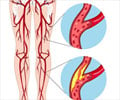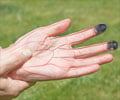Cilostazol Medication Information
Discover comprehensive details about Cilostazol, including its pronunciation, uses, dosage instructions, indications, and guidelines on how and when to take it or avoid it.
The updated prescription information covers potential side effects, precautions, warnings, and storage recommendations.
Additionally, explore the Cilostazol brands available in India and internationally, along with pricing information. For personalized advice, consult your healthcare provider.
Generic Name : Cilostazol Pronunciation : sil-OH-sta-zol ICD Code : Y44.2 Therapeutic Classification : Anticoagulants / AntithromboticsBrand Names or Trade Names of Cilostazol
India :
International :
Pletal.
Why is Cilostazol Prescribed? (Indications)
This medication is a phosphodiesterase type 3 inhibitor, prescribed for intermittent claudication. It works by improving blood flow to the legs.When should Cilostazol not be taken? (Contraindications)
Contraindicated in patients with excessive bleeding disorders, heart failure, and hypersensitivity.What is the dosage of Cilostazol?
Adult- PO- The recommended dose is 100 mg twice a day taken at least half an hour before or two hours after breakfast and dinner.How should Cilostazol be taken?
It comes as a tablet to take by mouth, with food.What are the warnings and precautions for Cilostazol?
• Caution should be exercised in patients with history of heart, kidney, or liver disease, any allergy, who are taking other medication, during pregnancy and breastfeeding.• It may cause dizziness, do not drive a car or operate machinery while taking this medication.
• Monitor complete blood counts regularly while taking this medication.
What are the side effects of Cilostazol?
Most Common - Weakness, high blood pressure, vomiting, leg cramps, sensory loss, tingling, difficulty in breathing, rash, blood in urine, urinary tract infection, flu syndrome, chest pain, joint inflammation, and lung inflammation.Body as a whole - Abdominal pain, back pain, headache, infection, chills, face swelling, fever, fluid retention, uneasiness, neck rigidity and pelvic pain.
Heart - Palpitations, fast heart rate, atrial flutter, stroke, heart failure, heart arrest, low blood pressure, heart attack, abnormal heart rhythm, fast heart rate, fainting and dilatation of blood vessels.
Gastrointestinal - Abnormal stools, indigestion, flatulence, nausea, loss of appetite, gall stone, duodenal ulcer, increased GGT, gastritis, stomach flu, gum bleeding, blood vomiting, blood in stool, peptic ulcer, rectal bleeding, stomach ulcer and tongue swelling.
Blood - Anemia, bruising and abnormal increase in red blood cells.
Metabolic - Increased sugar level, swelling in the extremities, gout and increased cholesterol level.
Musculoskeletal - Joint pain, bone pain and muscle pain.
Central Nervous System - Anxiety, sleeplessness, nerve pain and dizziness.
Respiratory System - Increased cough, asthma, nosebleed, pneumonia and sinus inflammation.
Skin - Dry skin, skin scar and hives.
Eye and ENT - Abnormal vision, blindness, eye inflammation, double vision, ear pain, retinal bleeding and ringing in the ear.
Genitourinary - Bladder inflammation, urinary frequency, vaginal bleeding and vaginal inflammation.






